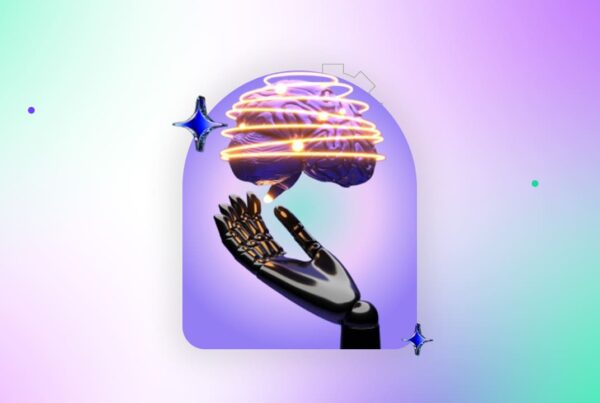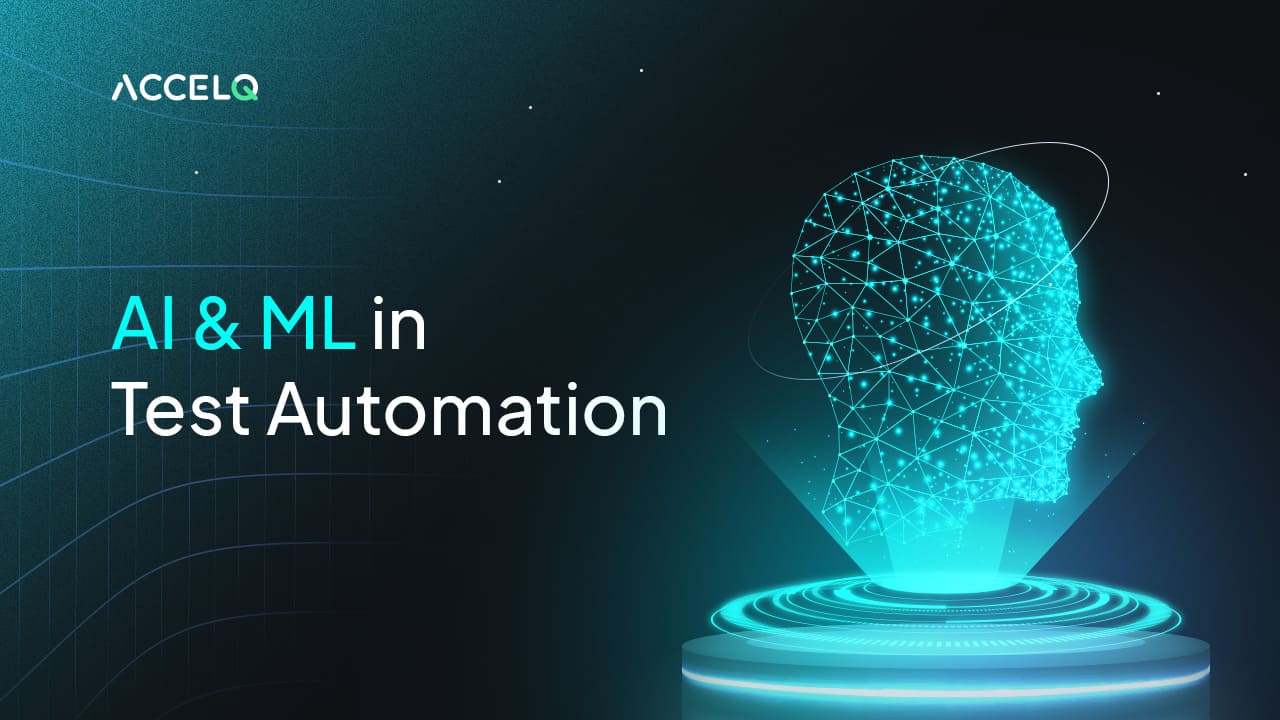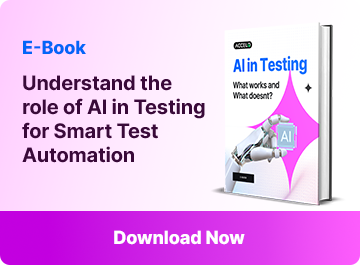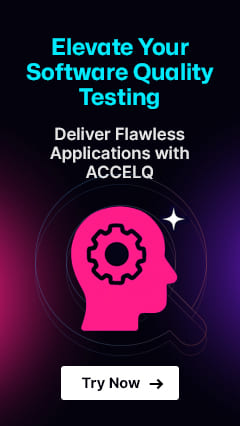Role of AI and ML in Test Automation

Every industry talks about Artificial Intelligence (AI) and Machine Learning (ML). A fitness tracker that uses AI to better training, an intelligent house assistant, and buyer-recommendation software. Some streaming apps recommend music or movies based on our data, and automation testing tools improve our tests.
Machine learning is a computer science subject that builds helpful algorithms using a set of observations without being explicitly programmed. These instances can be natural, human-made, or programmed.
What is AI?
Machines can learn facts that help them make choices with the help of artificial intelligence. The algorithms are not meant to solve a specific problem but can draw a result from the data. The main idea behind artificial intelligence is to use machine learning to teach models with lots of data and then use those models to make predictions or produce the desired output. This description is oversimplified, and almost all of Artificial Intelligence fits into it.
What is ML?
Below, we divided the machine learning approaches into the following categories depending on the learning types.

Supervised Learning
The machine learning task of learning a function that translates an input to an output based on example input-output pairs is supervised learning. The inferred process can map additional examples as the algorithm reviews the training data. Recommendations and time series prediction are traditional challenges constructed on top of classification and regression. Linear regression for regression problems is a well-known example of supervised machine learning.
Unsupervised Learning
An unsupervised learning method seeks to develop a model that takes a feature vector x as input and turns it into another vector or a value needed to address a practical problem. Unsupervised learning works with data that does not contain labels. Our models don’t have labels that show their desired behavior because there isn’t a trustworthy reference to measure their quality.
Reinforcement Learning
Reinforcement learning is a subset of machine learning where the machine lives in an environment and can sense the state of the environment as a set of features. The goal of reinforcement learning is to learn a policy. A policy is a function that takes the feature of a state as input and produces an optimal action to perform in that state like a supervised learning model.
Reinforcement learning handles a problem when decision-making is sequential and long-term goals, such as game playing, robotics, resource management, or logistics.
AI and ML in test automation
Over the last few decades, the automation testing paradigm has evolved tremendously. The testing path has been encouraging, from functional testing to automation testing, when Selenium was regarded as one of the most acceptable test automation tools.
However, the software testing sector must develop novel testing approaches in today’s environment. For this goal, introducing AI automation testing tools has been extremely beneficial.
Furthermore, firms are looking for tools that can leverage AI and ML algorithms to improve Test Automation. It has also been observed that organizations profit from AI in test automation. It will allow for faster and continuous testing, nearly total automation, and faster ROI.
AI and ML in test automation improve test script competency, reliability, and efficiency. Nonetheless, firms confront numerous obstacles when using standard automation testing methodologies. AI-powered automation solutions, in particular, can help overcome such issues.

Time
Every time a new test automation project is launched, testing teams write a large amount of comparable code, regardless of how reusable the components are. Implementing a new technology or adapting the present company architecture may take a significant amount of time. AI tools can help develop test scripts rapidly and autonomously.
Changes
Product teams frequently modify the apps (UI). Even if the difference is tiny or undetectable, it may cause the test scripts to fail when executing certain activities on the page. AI/ML tools can use auto-healing strategies to avoid these changes and keep test scripts running smoothly.
Flakiness
AI/ML tools can support teams in overcoming the challenge of flaky tests. These tools can create or update more robust test cases and discover patterns in random test failures to speed up the process.
Test Script coverage
Running the whole regression suite of test cases in Agile projects is impossible after each update. However, AI/ML technologies can assist testers in creating and configuring regression test suites for specified modifications based on various characteristics specific to the project or differences.
Machine Learning Test Automation Example
Example: Predictive Analysis in Test Automation
Scenario: You are part of a QA team responsible for ensuring the quality of a web application. The application is complex, with frequent updates and new features. Traditional test automation strategies are proving to be time-consuming and cannot keep up with the pace of development.
Solution: Implement AI and ML algorithms to perform predictive analysis on your test data. This involves analyzing past test results to predict potential problem areas in the software before they manifest. By identifying patterns and trends in the data, the ML model can highlight which application parts are more likely to contain bugs or fail under certain conditions.
Steps:
- Data Collection: Gather historical test data, including test cases, outcomes, and application changes.
- Model Training: Use this data to train an ML model, teaching it to recognize patterns associated with failures or bugs.
- Prediction: Once trained, use the model to analyze new changes or features in the application. The model predicts potential problem areas or suggests specific tests that are likely to fail.
- Test Execution: Focus your testing efforts on these predicted areas, alongside your regular test suite.
- Feedback Loop: As test results are generated, feed them back into the model to improve its accuracy over time.
Benefits:
- Efficiency: Reduces the time spent on identifying which tests to run, focusing efforts on high-risk areas.
- Proactivity: Allows the team to address issues before they impact the end-user, improving the quality of the application.
- Continuous Improvement: The model becomes more accurate over time, further optimizing the testing process.
AI Automation Testing Tools
Any developer, tester, or SDET can use code to create random field inputs for basic automated testing. Due to repetition or non-business purposes, many of those tests will be wasted. In those circumstances, manually written tests are superior because the developer knows business flow better.
AI can improve business logic-based automated testing. Customers put an item in their online shopping basket to test an API with an address before being sent to the address page. Still, nothing wastes time. AI/ML automated testing can produce a dynamic set of meaningful input values for a broader application test with more reliable results.
This advanced software testing strategy merges AI, ML, and DL with automation testing. Process to enhance software quality and accelerate delivery. Suppose you wish to use AI and ML for robust automation. I recommend trying ACCELQ.
- Functional Virtualization and Reconciliation – Helping in-sprint automation align with CI/CD and shifting left test automation.
- Element handling and bot healing – Imagine your test automation with low maintenance and robustness. With Bot healing at your service, dynamic elements can be identified every time, and no more flaky tests.
- Auto-generation of Test Cases – Imagine that you can capture the best test coverage based on Scientific permutation and flow identification in real-time. With auto-generation test cases, that would be possible optimum test coverage.
- Test Data Generator using synthetic data generation – Synthetic data can be used for various use cases. It can be used for all functional and non-functional testing, and we can use it for the data-drive approach.
Want to experience AI-powered test automation in action? Explore ACCELQ Autopilot and take your testing efficiency to the next level!
Conclusion
As QA Leaders, we need to learn and adapt to emerging technologies and business practices in today’s world. In addition, we need to know new AI-based tools and necessary skills to be more productive and successful.
AI automation testing tools generation has the potential to finally fill that missing productivity gap in the global digital economy. We must avoid complexity in our lives while saving time for everyone and focusing on critical things. So, it seems wise to look forward to those tools and start learning.
You Might Also Like:
 AI Test Automation for nCino | Powering Fintech Innovation
AI Test Automation for nCino | Powering Fintech Innovation
AI Test Automation for nCino | Powering Fintech Innovation
 Unlocking the Power of AI in Testing Automation for Next-Gen Apps
Unlocking the Power of AI in Testing Automation for Next-Gen Apps
Unlocking the Power of AI in Testing Automation for Next-Gen Apps
 Smarter, Faster Testing with Generative AI-Powered Autopilot
Smarter, Faster Testing with Generative AI-Powered Autopilot


































